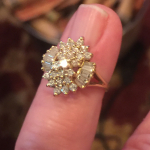Emmett Till chathamhouserestaurant.com/ Framed Art Prints
Content
Department of Justice stated that it was reopening the investigation into Till’s death due to new information. Justice Department announced that it had closed its investigation in the case. Till’s body was clothed, packed in lime, placed into a pine coffin, and prepared for burial.

- His head was very badly mutilated, he had been shot above the right ear, an eye was dislodged from the socket, there was evidence that he had been beaten on the back and the hips, and his body weighted by a fan blade, which was fastened around his neck with barbed wire.
- On August 24, he and cousin Curtis Jones skipped church where his great-uncle Mose Wright was preaching and joined some local boys as they went to Bryant’s Grocery and Meat Market to buy candy.
- A reporter who covered the trial for the New Orleans Times-Picayune said it was “the most dramatic thing I saw in my career”.
- In August 1955, Till’s great uncle Moses Wright came up from Mississippi to visit the family in Chicago.
- Milam, Roy Bryant’s half-brother, were tried for Till’s murder but were quickly acquitted by an all-white jury.
Schutz’s pictorial logic allows her to build pictures that are simultaneously convincing and absurd, troubling and uncanny. Sometimes it’s hard to figure out what’s going on in them, but that doesn’t bother her—she feels that there should be room for the viewer to complete the story. The private worlds that her bold, declarative colors and thrusting forms evoke can be inexplicable, but they resonate with the anxieties and contradictions of contemporary life. Gwendolyn Brooks wrote a poem titled “A Bronzeville Mother Loiters in Mississippi. Meanwhile, A Mississippi Mother Burns Bacon” . The same year Harper Lee published To Kill a Mockingbird, in which a white attorney is committed to defending a black man named Tom Robinson, accused of raping a white woman. Lee, whose novel had a profound effect on civil rights, never commented on why she wrote about Robinson.
Plans To Visit Relatives In Mississippi
I would never stand in the way of protest, particularly an informed one aimed at raising awareness of the politics of racial representation, a subject that I’ve tackled in various chathamhouserestaurant.com/ capacities for more than 30 years. A group of artists staging enraged spectatorship before an artwork in a museum strikes me as an entirely valid symbolic gesture. A reasoned conversation about how artists and curators of all backgrounds represent collective traumas and racial injustice would, in an ideal world, be a regular occurrence in art museums and schools. As an artist, curator, and teacher, I welcome strong reactions to artworks and have learned to expect them when challenging issues, forms, and substance are put before viewers. On many occasions I have had to contend with self-righteous people — of all of ethnic backgrounds — who have declared with conviction that this or that can’t be art or shouldn’t be seen. There is a deeply puritanical and anti-intellectual strain in American culture that expresses itself by putting moral judgment before aesthetic understanding.
The Aftermath Of Emmett Till’s Murder
Some say that Till never whistled at Carolyn, while his cousins — who were there at the scene — say that he did. Knowing that Till’s act could get them into trouble, the group immediately left the vicinity. Emmett Louis Till was born in Chicago on July 25, 1941, to Louis and Mamie Till. He was nicknamed Bobo by his family, and he was described as a jokester who always had the ability to make those around him laugh.
Related Artworks
It was frustrating to try to envision this nightmare in your mind and have to translate it to the canvas. Mamie Bradley, mother of lynched teenager Emmett Till, stands with her father, 1955. Half-brothers J.W. Milam and Roy Bryant confer with attorney Sidney Carlton on murder and kidnapping charges facing them in the death of 14-year-old… Mamie Bradley, mother of lynched teenager Emmett Till, delivers a speech, Baltimore, Maryland, 1955. Mamie Bradley, mother of lynched teenager Emmett Till, stands with her father in court, 1955.
Furthermore, in her letter, Black does not consider the history of anti-racist art by white artists. She does not recognize that the trope of the suffering body that originated in Western art with the figure of the Christian martyr informs much representation of racialized oppression — by white and black artists. She does not account for the fact that black artists have also accrued social capital and commercial gain from their treatment of black suffering. Numerous black artists have depicted enslaved bodies, lynched bodies, maimed bodies, and imprisoned bodies in the early stages of their careers — and then moved away from such politically charged subject matter without having their morality or sense of responsibility impugned. The mainstream media’s “willingness” to circulate images of black people in distress is equated with public lynching.
A young boy from Chicago, Till was killed by white men during a visit to his great-uncle Moses Wright’s house in Money, Miss. While the precise details of Till’s actions remain unclear, he was perceived to have offended a white woman, and thus crossed the racial boundaries of 1955 Mississippi. His mother, Mamie Till Mobley, had her son laid out in the glass-topped casket so the world could see “what they did to my boy.” He was buried in Burr Oak Cemetery in suburban Chicago. The body was exhumed for an autopsy in 2005 during another criminal investigation into his murder, and Till was reburied in another coffin. Till’s devastated mother insisted on a public, open-casket funeral for her son to shed light on the violence inflicted on Black people in the South.







